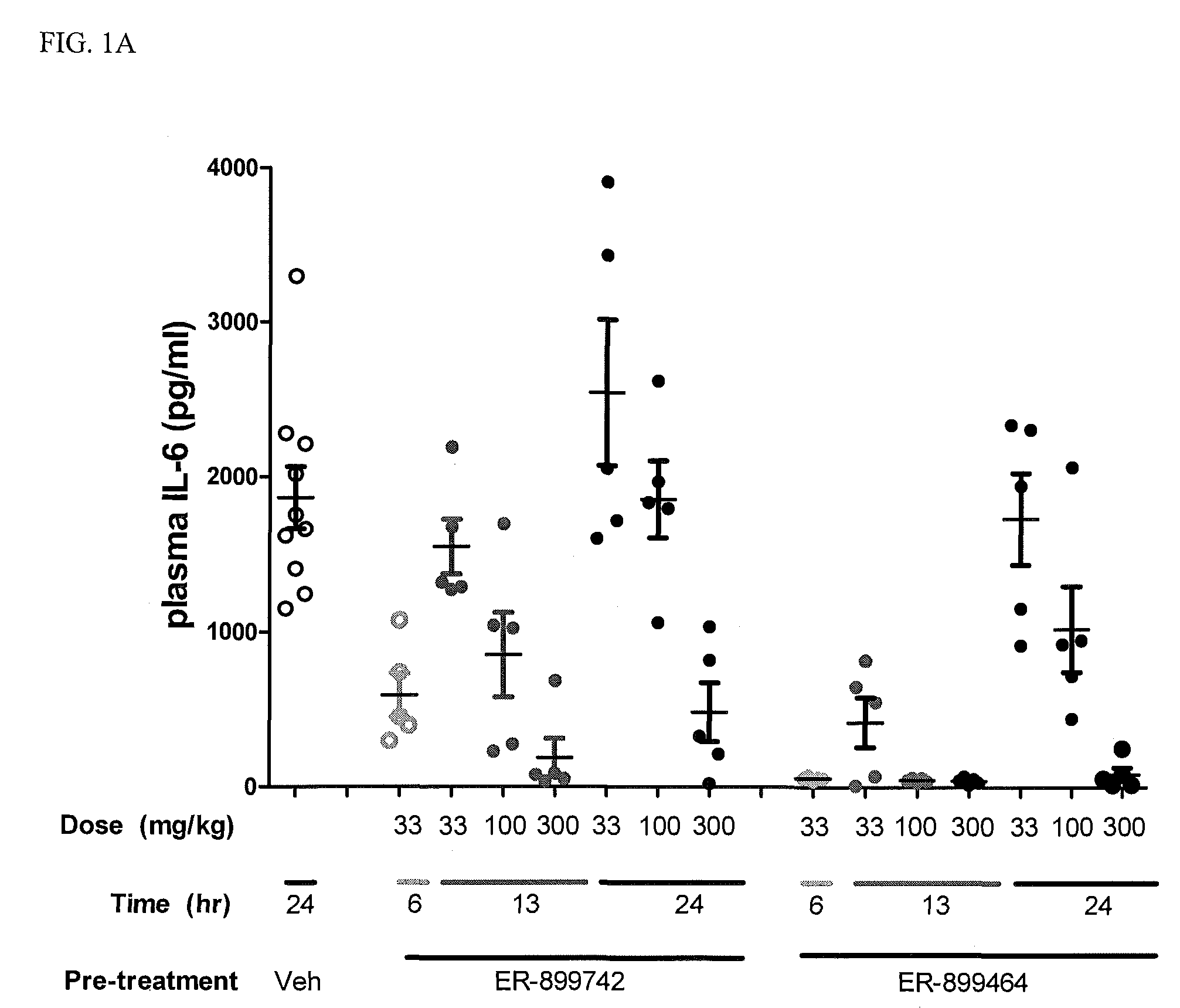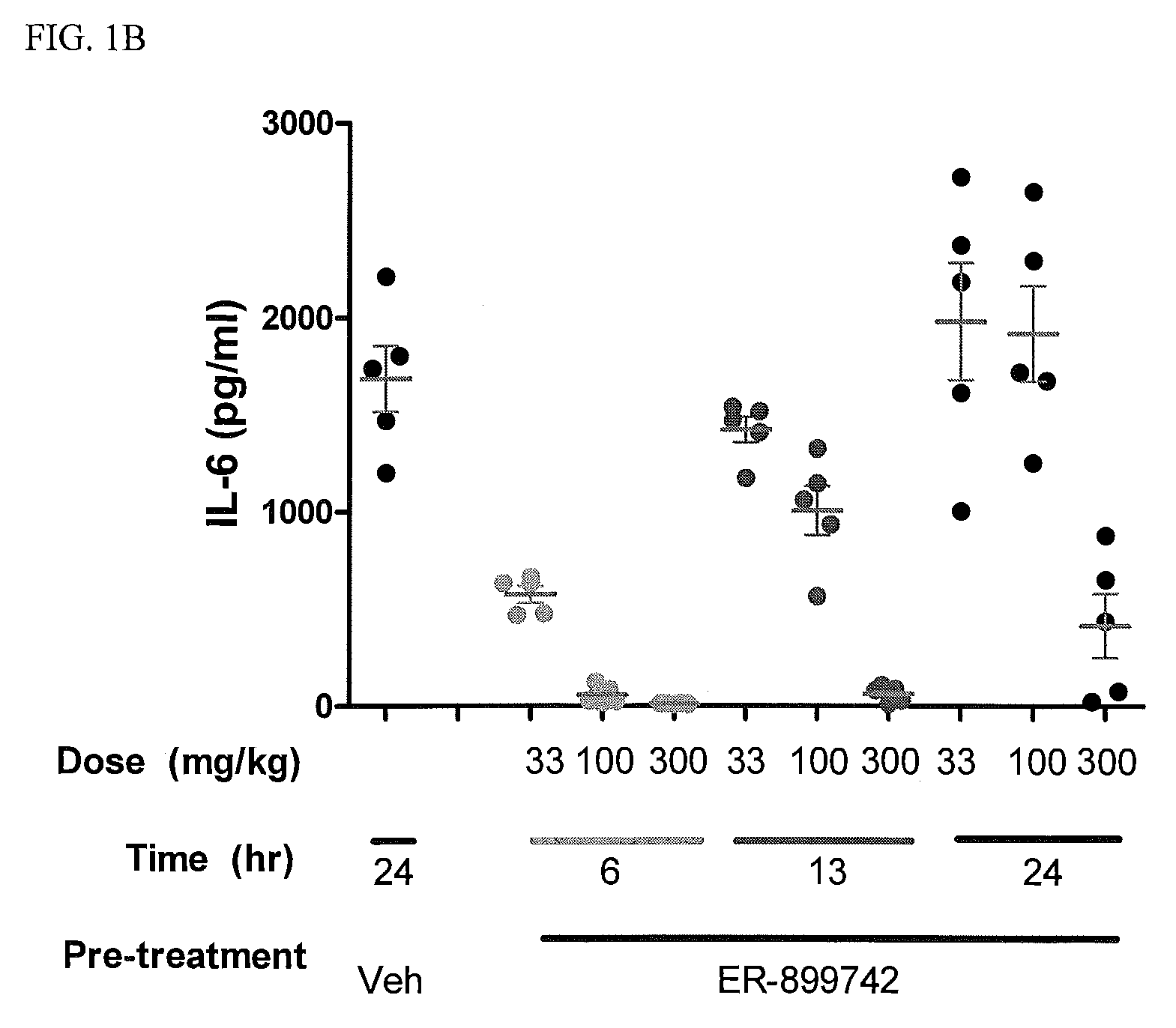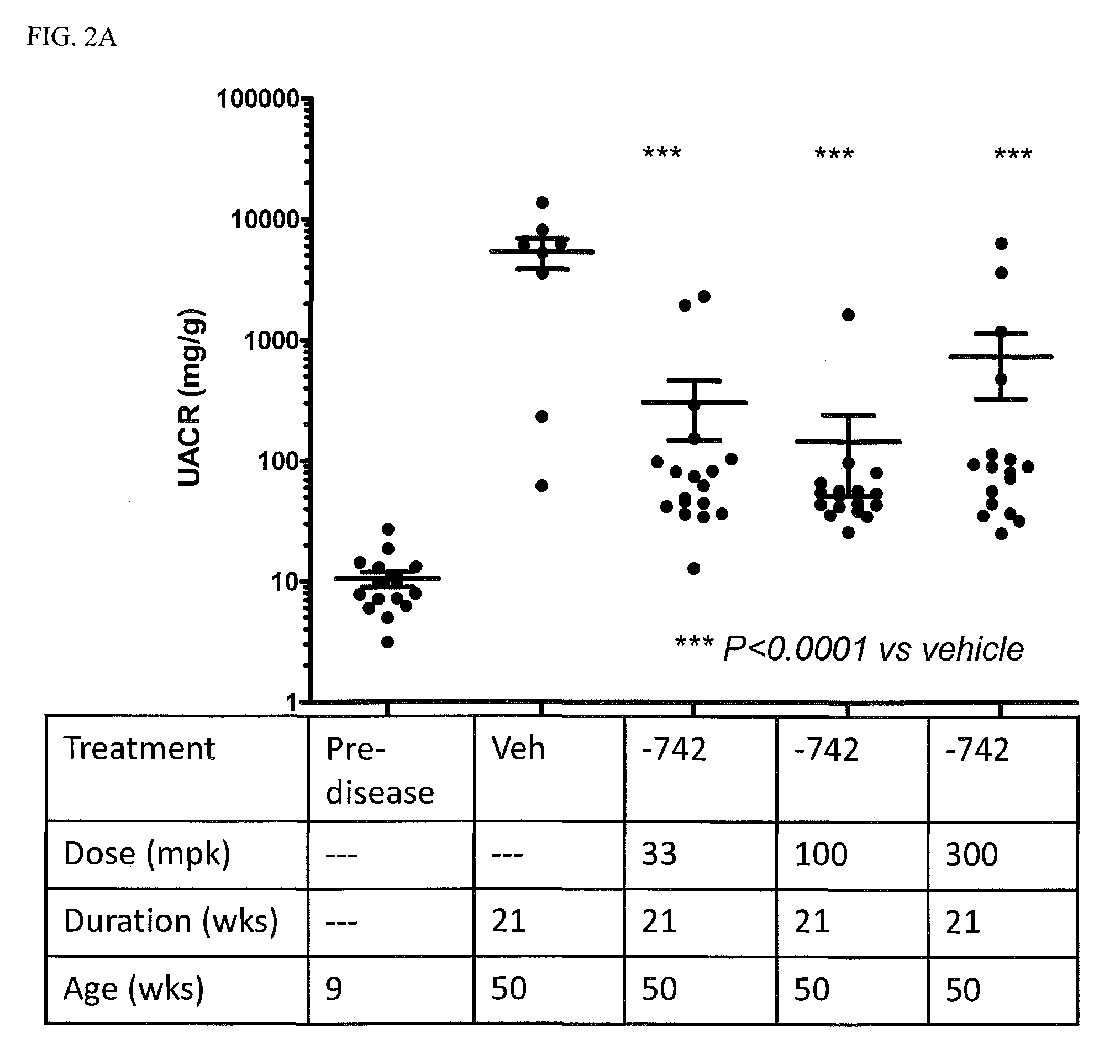Selectively substituted quinoline compounds
a technology of quinoline compounds and quinoline, applied in the field of selective substitution of quinoline compounds and pharmaceutical agents, can solve the problems of dose-limiting side effects, many patients still have poorly controlled disease, and damage to skin, kidneys, organs,
- Summary
- Abstract
- Description
- Claims
- Application Information
AI Technical Summary
Benefits of technology
Problems solved by technology
Method used
Image
Examples
Embodiment Construction
[0081]I. TLRs and Lupus
[0082]In addition to their role as innate immune receptors capable of detecting exogenous (“non-self”) pathogen-associated molecular patterns (PAMPs—i.e., bacterial LPS detection by TLR4), mammalian Toll-like receptors (TLRs) are also capable of recognizing endogenous stimuli (DAMPs) released following host tissue damage or stress. Kono, H. and K. L. Rock, How dying cells alert the immune system to danger. Nat Rev Immunol, 2008. 8(4): p. 279-89. In the last decade an appreciation for the link between TLR activation by endogenous (“self”) danger-associated molecular patterns (DAMPs) and the etiology of autoimmune disorders has emerged. Specifically, TLR7 can be activated by single-stranded RNA (ssRNA) derived from both mammalian and viral sources, whereas TLR9 can be activated by DNA derived from mammalian, viral, and bacterial sources.
[0083]Lupus is characterized by auto-antibodies reactive against double-stranded DNA (dsDNA) itself and associated proteins (hi...
PUM
| Property | Measurement | Unit |
|---|---|---|
| flow rate | aaaaa | aaaaa |
| flow rate | aaaaa | aaaaa |
| flow rate | aaaaa | aaaaa |
Abstract
Description
Claims
Application Information
 Login to View More
Login to View More - R&D
- Intellectual Property
- Life Sciences
- Materials
- Tech Scout
- Unparalleled Data Quality
- Higher Quality Content
- 60% Fewer Hallucinations
Browse by: Latest US Patents, China's latest patents, Technical Efficacy Thesaurus, Application Domain, Technology Topic, Popular Technical Reports.
© 2025 PatSnap. All rights reserved.Legal|Privacy policy|Modern Slavery Act Transparency Statement|Sitemap|About US| Contact US: help@patsnap.com



